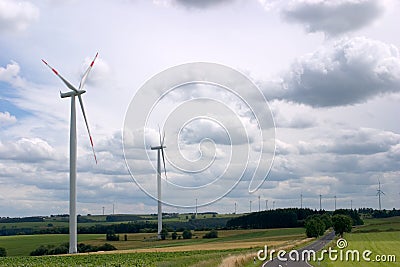 Don’t you hate it when that happens? You made a great pic and the subject of your pic is well exposed, but the sky is blown out white. It gives your picture a cheap and snapshottish feel. Why do the pros always have these great cloudy skies in their picture? More important, how do I get those as well?
Don’t you hate it when that happens? You made a great pic and the subject of your pic is well exposed, but the sky is blown out white. It gives your picture a cheap and snapshottish feel. Why do the pros always have these great cloudy skies in their picture? More important, how do I get those as well?Let’s first take a look at the cause of these blown out skies. They occur on overcast days, especially when a thin and even layer of clouds lays over the entire sky. The clouds work as a giant diffusion screen and you are shooting against the light whenever you have some sky in your composition. The sky will be too light compared to the rest of your image.
Composition
If you can, exclude skies from your composition or find that piece of sky where clouds are either thicker or absent. True, it’s the easiest tip to give and the hardest to execute. But try it anyway and be creative. Get closer to your subject, change your angle to have a tree or building behind it, or photograph from a high viewpoint to lower your angle.
Filters
Using filters on your camera might help, but don’t count on miracles to happen. If there is any blue in the clouds, orange or red filters may bring out the shape of the clouds. Obviously, this is useful only if you are shooting black and white. Neutral Density gradual (Nd grad) filters and polarizers may help a little. Filters –of any kind- will work bust when clouds are thin, i.e. when you can feel the sun through the clouds.
Use deep DOF and underexpose
A fairly simple thing to do is underexposure your picture. If you underexpose by about 1 stop (i.e. divide your exposure time by two), details in the clouds are more likely to become visible. Some blown out parts may remain, but at least it’s not all white. Combine the underexposure with a deep depth of field, so that the regained details are not lost in out-of-focus softness.
Better still: Bracket!
Obviously, with exposure correction, you will get the skies right, but have your subject underexposed. The best thing to do is take a couple of shots at different exposures and combine those in post processing. This does require some post processing skills though. HDR-software might come in handy too.
Fill flash
If your subject is close enough, use a flash to light your subject, allowing you to expose both the sky and your subject correctly. Depending on the type of flash and camera you’re using, you can either try to find the right amount of flash power or find the right combination of exposure time and aperture to get correct exposure of both the sky and the subject. I will devote an article to fill flash soon. ETA: done, you can find it here.
Post process
You might also want to adjust your picture after shooting it. Many people have suggested the ‘replace color’ option in Photoshop, or replacing the white with a picture of a sky. I am not too pleased with the results of these techniques. The results are okayish for small prints in the family or holiday album, but a photo enthusiast will probably want a better result. Below, you’ll find a link to a promising tutorial with a more natural looking result.
More resources
A nice PS tutorial
Wikipedia on bracketing
How to use fill flash
No comments:
Post a Comment